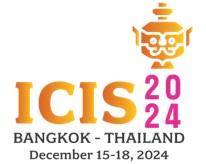Loading...
Paper Number
1681
Paper Type
Short
Abstract
Generative AI (GenAI), with its versatility and general-purpose capability for content creation, has the potential to shape a wide range of professional work across different industries. This research-in-progress identifies emergent configurations of humans and GenAI to offer an understanding of the changing nature of software development tasks and work practice in general. The empirical materials are drawn from 15 interviews with software developers with different levels of experience who use GenAI as part of their work. Our abductive analysis, grounded in the notion of configurations and a work design perspective, identifies three configurations – i.e., GenAI as auto-pilot, GenAI as co-pilot, and human as pilot-in-command – that explain the manifestations of automation and augmentation and the distribution of responsibilities between humans and GenAI. Overall, the findings shed light on the changing nature of software development work where human agencies are crucial in managing emergent configurations with AI.
Recommended Citation
Safari, Narges; Techatassanasoontorn, Angsana A.; and Diaz Andrade, Antonio, "Auto-Pilot, Co-Pilot and Pilot: Human and Generative AI Configurations in Software Development" (2024). ICIS 2024 Proceedings. 7.
https://aisel.aisnet.org/icis2024/isdesign/isdesign/7
Auto-Pilot, Co-Pilot and Pilot: Human and Generative AI Configurations in Software Development
Generative AI (GenAI), with its versatility and general-purpose capability for content creation, has the potential to shape a wide range of professional work across different industries. This research-in-progress identifies emergent configurations of humans and GenAI to offer an understanding of the changing nature of software development tasks and work practice in general. The empirical materials are drawn from 15 interviews with software developers with different levels of experience who use GenAI as part of their work. Our abductive analysis, grounded in the notion of configurations and a work design perspective, identifies three configurations – i.e., GenAI as auto-pilot, GenAI as co-pilot, and human as pilot-in-command – that explain the manifestations of automation and augmentation and the distribution of responsibilities between humans and GenAI. Overall, the findings shed light on the changing nature of software development work where human agencies are crucial in managing emergent configurations with AI.
When commenting on articles, please be friendly, welcoming, respectful and abide by the AIS eLibrary Discussion Thread Code of Conduct posted here.



Comments
11-PM